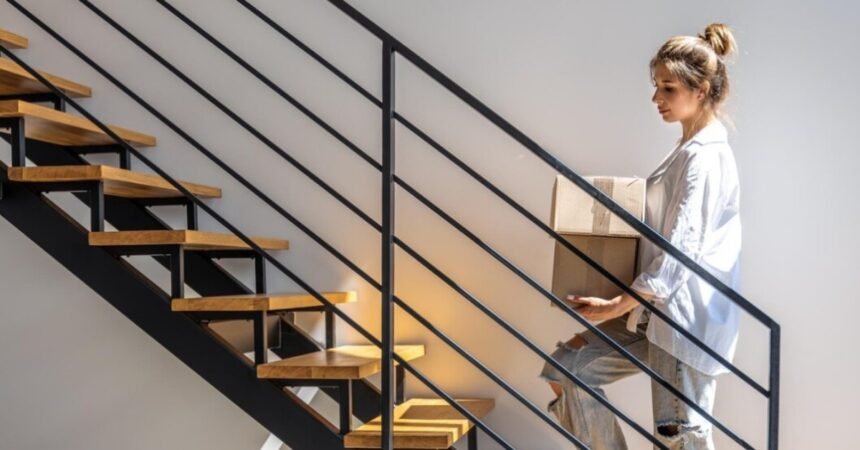This design choice does more than save space—it turns a staircase into a visual centerpiece. Paired with minimalist railings such as glass or cable, a floating staircase can completely transform the atmosphere of a room. Still, as stunning as they are, these staircases require careful planning and precise installation. They offer unique advantages but also come with specific challenges that must be addressed before construction begins.
The floating staircase and Luxury Staircase Railings represent a blend of modern architecture and advanced engineering. Floating staircases have become increasingly popular in today’s homes thanks to their sleek appearance, open structure, and ability to make interiors feel larger and brighter. Unlike traditional designs with bulky stringers and closed risers, floating stairs use hidden supports that create the illusion of steps suspended in midair.
Below, we explore the main benefits of installing a floating staircase, the potential difficulties to keep in mind, and practical steps to ensure a smooth and successful project.
Key Advantages of a Floating Staircase
The primary appeal of floating staircases lies in their modern, minimalist aesthetic. Their open design allows natural light to pass through, making even small rooms feel spacious and airy. They complement open-concept layouts beautifully, blending seamlessly with living areas, kitchens, and lofts.
From a design perspective, floating stairs are highly customizable. Homeowners can choose from a variety of tread materials—wood, glass, or metal—and pair them with different railing styles such as sleek glass panels, thin steel cables, or matte black frames. This flexibility allows each installation to reflect the homeowner’s personal taste and architectural style.
Floating staircases also increase property value. Their distinctive look is often associated with luxury and innovation, attracting potential buyers who appreciate modern design. In addition, their open structure can make spaces appear more expansive, which is especially beneficial in smaller homes or urban apartments.
When designed and installed by experienced professionals like Luxury Staircase Railings, these staircases are just as safe and sturdy as traditional ones. Precision engineering ensures proper weight distribution and code compliance, so homeowners can enjoy both beauty and peace of mind.
Challenges and What to Plan For
While floating staircases bring unmatched visual appeal, they require careful planning and attention to detail. The first consideration is structural support. Because the treads appear to “float,” the hidden framework must be precisely engineered to handle weight safely. This often means reinforcing walls or installing a strong central spine beam. Without proper planning, the staircase may not meet safety standards.
Another factor is building code compliance. Local regulations set specific rules for tread spacing, railing height, and load capacity. Working with a professional installer ensures your design remains both stylish and legal. Ignoring these requirements can lead to costly redesigns or delays.
Installation costs can also be higher than with traditional stairs. The materials, structural work, and skilled labor needed for a floating staircase typically require a larger budget. However, the long-term value often outweighs the upfront investment, especially in modern or luxury homes.
Maintenance is another consideration. While open designs collect less dust under the stairs, materials like glass or polished steel may need frequent cleaning to maintain their appearance. Choosing finishes that resist fingerprints or scratches helps keep upkeep simple.
Finally, consider safety preferences. Families with small children or pets may want to include closed risers or sturdier railings for added security. Transparent railings, such as glass panels, maintain the open look while preventing falls.
Planning ahead for these factors—structure, cost, safety, and upkeep—ensures a smooth installation and a staircase that’s both stunning and practical.









